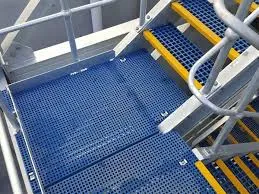
-
 Afrikaans
Afrikaans -
 Albanian
Albanian -
 Amharic
Amharic -
 Arabic
Arabic -
 Armenian
Armenian -
 Azerbaijani
Azerbaijani -
 Basque
Basque -
 Belarusian
Belarusian -
 Bengali
Bengali -
 Bosnian
Bosnian -
 Bulgarian
Bulgarian -
 Catalan
Catalan -
 Cebuano
Cebuano -
 China
China -
 China (Taiwan)
China (Taiwan) -
 Corsican
Corsican -
 Croatian
Croatian -
 Czech
Czech -
 Danish
Danish -
 Dutch
Dutch -
 English
English -
 Esperanto
Esperanto -
 Estonian
Estonian -
 Finnish
Finnish -
 French
French -
 Frisian
Frisian -
 Galician
Galician -
 Georgian
Georgian -
 German
German -
 Greek
Greek -
 Gujarati
Gujarati -
 Haitian Creole
Haitian Creole -
 hausa
hausa -
 hawaiian
hawaiian -
 Hebrew
Hebrew -
 Hindi
Hindi -
 Miao
Miao -
 Hungarian
Hungarian -
 Icelandic
Icelandic -
 igbo
igbo -
 Indonesian
Indonesian -
 irish
irish -
 Italian
Italian -
 Japanese
Japanese -
 Javanese
Javanese -
 Kannada
Kannada -
 kazakh
kazakh -
 Khmer
Khmer -
 Rwandese
Rwandese -
 Korean
Korean -
 Kurdish
Kurdish -
 Kyrgyz
Kyrgyz -
 Lao
Lao -
 Latin
Latin -
 Latvian
Latvian -
 Lithuanian
Lithuanian -
 Luxembourgish
Luxembourgish -
 Macedonian
Macedonian -
 Malgashi
Malgashi -
 Malay
Malay -
 Malayalam
Malayalam -
 Maltese
Maltese -
 Maori
Maori -
 Marathi
Marathi -
 Mongolian
Mongolian -
 Myanmar
Myanmar -
 Nepali
Nepali -
 Norwegian
Norwegian -
 Norwegian
Norwegian -
 Occitan
Occitan -
 Pashto
Pashto -
 Persian
Persian -
 Polish
Polish -
 Portuguese
Portuguese -
 Punjabi
Punjabi -
 Romanian
Romanian -
 Russian
Russian -
 Samoan
Samoan -
 Scottish Gaelic
Scottish Gaelic -
 Serbian
Serbian -
 Sesotho
Sesotho -
 Shona
Shona -
 Sindhi
Sindhi -
 Sinhala
Sinhala -
 Slovak
Slovak -
 Slovenian
Slovenian -
 Somali
Somali -
 Spanish
Spanish -
 Sundanese
Sundanese -
 Swahili
Swahili -
 Swedish
Swedish -
 Tagalog
Tagalog -
 Tajik
Tajik -
 Tamil
Tamil -
 Tatar
Tatar -
 Telugu
Telugu -
 Thai
Thai -
 Turkish
Turkish -
 Turkmen
Turkmen -
 Ukrainian
Ukrainian -
 Urdu
Urdu -
 Uighur
Uighur -
 Uzbek
Uzbek -
 Vietnamese
Vietnamese -
 Welsh
Welsh -
 Bantu
Bantu -
 Yiddish
Yiddish -
 Yoruba
Yoruba -
 Zulu
Zulu
fiberglass weir
The Role and Benefits of Fiberglass Weirs in Water Management
In the realm of water management, fiberglass weirs have emerged as an innovative solution to address various challenges associated with flow measurement and regulation. A weir, traditionally a barrier across an open channel, is utilized to control the flow of water and measure its discharge. When constructed from fiberglass, weirs offer several advantages that enhance their effectiveness and longevity in diverse environmental conditions.
Durability and Longevity
One of the primary benefits of fiberglass weirs is their exceptional durability. Fiberglass is a composite material composed of resin and glass fibers, which makes it resistant to corrosion, rust, and deterioration from UV exposure. Unlike traditional materials such as wood or metal, fiberglass does not succumb to the elements, resulting in a longer lifespan and reduced maintenance costs. This longevity is especially crucial in harsh environments, such as wastewater treatment facilities or coastal areas, where weirs are constantly exposed to moisture and potential chemical reactions.
Lightweight and Versatile
Fiberglass weirs are also significantly lighter than their concrete or metal counterparts. This reduced weight facilitates easier transportation and installation, making them ideal for remote or challenging locations where heavy machinery may not be accessible. Moreover, their adaptability to various shapes and sizes allows engineers to customize weirs according to specific project requirements, ensuring optimal performance in different flow conditions.
Enhanced Flow Measurement Accuracy
fiberglass weir

Accurate flow measurement is critical in water management applications, and fiberglass weirs offer a design that enhances hydrological accuracy. The smooth, non-porous surface of fiberglass minimizes turbulence and friction, leading to more reliable flow readings. Additionally, when designed correctly, fiberglass weirs can incorporate features such as sharp crests or sloping sides, which contribute to precise discharge calculations in both open channels and closed systems.
Cost-Effectiveness
While the initial investment in fiberglass weirs may be higher than that of traditional materials, their long-term benefits can result in significant cost savings. The reduced need for maintenance and replacement, combined with their efficiency in monitoring water flow, makes fiberglass weirs a financially sound choice for municipalities and industries alike. Furthermore, their ability to withstand extreme weather conditions means fewer disruptions and enhanced reliability in critical water management scenarios.
Environmental Considerations
In an era where environmental sustainability is paramount, fiberglass weirs present a viable option for eco-friendly water management. The materials used in fiberglass production can be sourced responsibly, and the weirs can contribute to the preservation of aquatic ecosystems by regulating water flow and maintaining habitat integrity. Additionally, their resistance to chemical leaching ensures that surrounding water sources remain clean and unaffected by the structure itself.
Conclusion
In conclusion, fiberglass weirs are a remarkable advancement in water management technology. Their combination of durability, lightweight construction, accuracy in flow measurement, and cost-effectiveness positions them as a preferred choice for engineers and environmental managers alike. As communities continue to face challenges related to water resource management, the adoption of innovative solutions like fiberglass weirs will undoubtedly play a pivotal role in ensuring sustainable and efficient water systems.
Latest news
-
Exploring the Benefits of Top Hammer Drifter Rods for Enhanced Drilling PerformanceNewsJun.10,2025
-
High-Precision Fiberglass Winding Machine for GRP/FRP Pipe Production – Reliable & Efficient SolutionsNewsJun.10,2025
-
FRP Pipes & Fittings for Shipbuilding - Corrosion-Resistant & LightweightNewsJun.09,2025
-
Premium FRP Flooring Solutions Durable & Slip-ResistantNewsJun.09,2025
-
Premium Fiberglass Rectangular Tanks Durable & Lightweight SolutionNewsJun.09,2025
-
Tapered Drill String Design Guide Durable Performance & UsesNewsJun.09,2025









